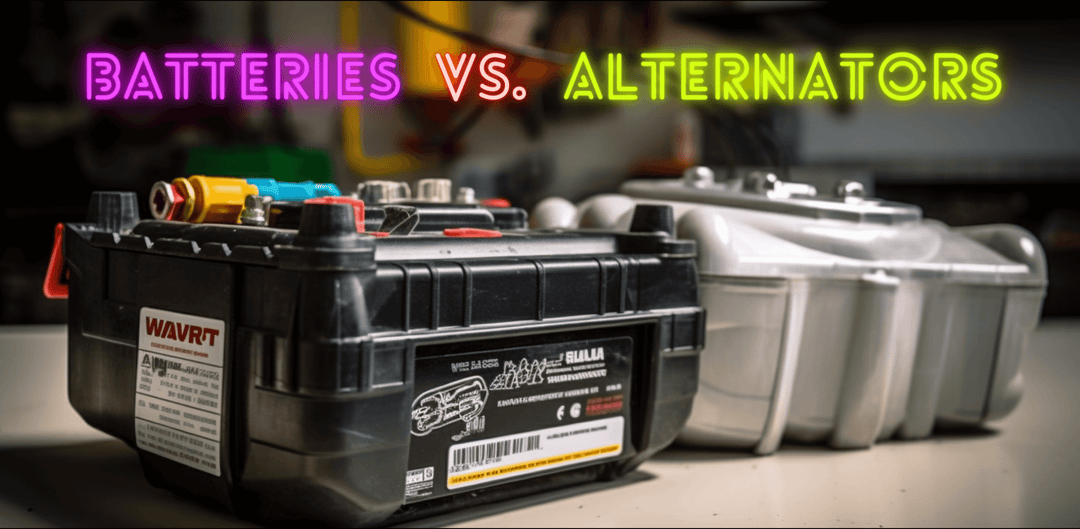A Guide To Charging Lithium And AGM Batteries: Tips And Best Practices
Charging lithium and AGM batteries can be daunting, like navigating a minefield of wires, volts, and amps. Understanding the principles behind these power sources is essential for achieving maximum performance.
To make life easier, this article will provide a comprehensive guide to charging lithium and AGM batteries safely and efficiently. We’ll cover all the main tips and best practices so you can get on with your day without worrying about potential hazards or damaging your battery’s lifespan.
Understanding Battery Chemistry
Battery chemistry is essential to understand when charging lithium and AGM batteries. Different battery types require different amounts of energy, which can affect your battery's life cycle if not set correctly.
Understanding each type’s particular climate requirements is essential for ensuring that your device has enough power while also prolonging the lifespan of your battery.
Lithium-ion (Li-ion) batteries are popular due to their lightweight and high energy density compared to other rechargeable batteries. They have good charge retention and can usually be recharged hundreds of times before needing to be replaced.
On the other hand, Absorbed Glass Mat (AGM) batteries utilize an acid electrolyte that is absorbed into a fiberglass mat separator between lead plates within the cells. This allows them to provide superior cranking power in colder temperatures than Li-ion batteries and offer longer shelf life and deeper discharge cycles, extending overall battery life.
It’s critical to remember that both these types of batteries come with unique characteristics requiring specialized chargers and maintenance procedures – ignoring this could result in reduced performance or even damage over time.
Preparing The Battery For Charging
Have you ever wondered what goes into preparing a battery for charging? Before beginning the process, it is essential to understand some key concepts and best practices.
Here are four essential tips:
-
Familiarize yourself with your battery’s specific charging protocols. Every type of battery will have different requirements regarding charging duration and amperage limits.
-
Check the electrolyte levels in flooded batteries (wet cell batteries) before plugging anything in. Add distilled or deionized water until the cells are correctly filled up.
-
Clean all dirt and debris around the terminals using a wire brush or cloth rag before connecting cables. This ensures a proper connection between the charger and battery posts, allowing current flow without obstruction.
-
Inspect all cables for signs of wear and tear, such as fraying wires or exposed wiring, which may be hazardous if left unchecked. Replace them immediately if needed.
It’s also beneficial to charge your battery at room temperature whenever possible; high temperatures can cause overcharging, while low temperatures can reduce capacity output significantly, leading to potentially dangerous situations that should be avoided at all costs!
Charging Methods And Techniques
When charging lithium or AGM batteries, knowing the proper methods and techniques is essential. Charging rates are one of the most crucial aspects when considering how to set these types of batteries - if charged too quickly, they can become damaged and even become dangerous due to overheating.
A slow-charging technique will help ensure your battery remains in good condition. Additionally, using small, frequent charging cycles rather than large ones are often recommended, as this helps keep the cells balanced while providing a longer life span for the battery.
It is also essential to ensure that you have appropriate safety precautions before charging any battery. It’s always a good idea to wear protective clothing and eyewear, use insulated tools whenever possible, and never attempt to set a damaged or wet battery.
Following these guidelines will help reduce risks associated with improper handling and minimize potential hazards such as fires or explosions. With all these tips combined, anyone should be able to charge their lithium or AGM batteries safely.
Safety Considerations
Charging your lithium and AGM batteries is like a delicate dance; if you take the proper steps, everything will flow harmoniously. But it’s important to remember that there are safety considerations when charging these types of batteries.
In addition to following all manufacturer instructions and observing applicable charging regulations, understanding how different conditions can affect battery life span should also be considered before setting. For instance, allowing a fully charged battery to remain on its charger for too long can dramatically reduce performance and shorten its lifespan.
Also, extreme hot and cold can cause damage to the cells inside the battery - so make sure to store them in an environment where temperature fluctuations are minimal. Similarly, leaving the terminals exposed to corrosion or moisture could significantly impact their effectiveness.
All these factors must be considered when charging your lithium or AGM batteries. Taking care of your power sources now may save you from headaches!
Maintenance And Storage Tips
Regular maintenance of lithium and AGM batteries is essential for optimal performance.
This includes conducting battery testing, charging the battery at least once a month, and keeping track of charge cycles.
Battery testing should be done yearly to check its condition and detect any potential issues.
When recharging a lithium or AGM battery, it’s essential to use an appropriate charger that won’t overcharge it.
Following manufacturer instructions when charging will help ensure successful recharge cycles while avoiding damage to the battery in the long run.
When storing lithium and AGM batteries, ensure they’re kept in cool places away from direct sunlight.
It’s also essential to keep them charged so their cells don’t become unstable.
Storing them with a 50% charge can extend their lifespan significantly and reduce the risk of sulfation buildup due to low voltage levels.
Also, checking on your stored batteries every few months is recommended; this helps determine whether additional charges are needed before using them again.
Conclusion
Charging lithium and AGM batteries correctly is essential for ensuring a long life, optimal performance, and safety. Knowing how to set these types of batteries properly can save time, money, and hassle in the future.
Have you been able to make sure your battery charging practices are safe and effective? Whether it’s understanding battery chemistry or simply following maintenance tips and best practices, taking the necessary precautions now will help ensure your batteries stay healthy in the years ahead.




